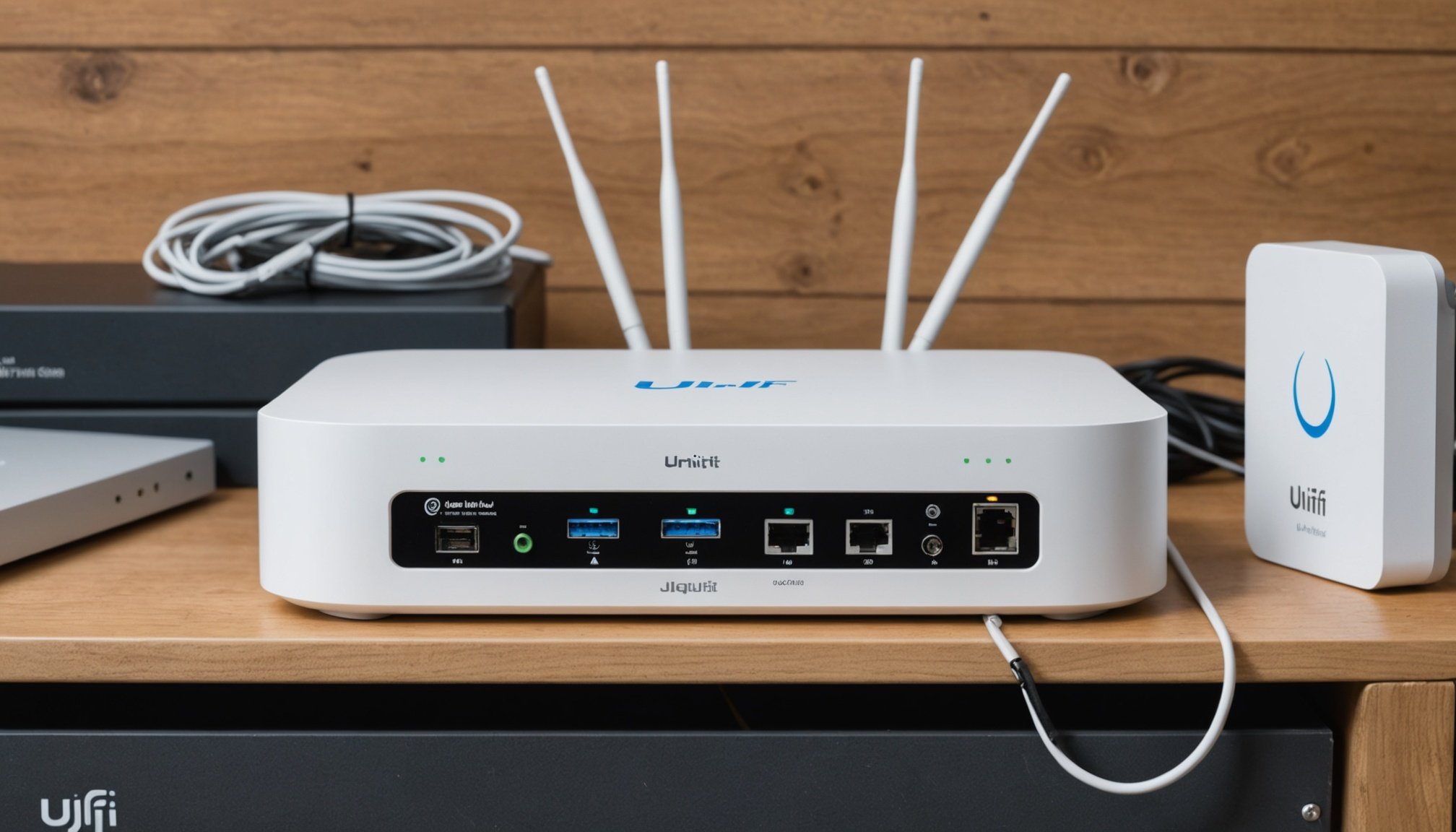Comprehensive Guide to Ubiquiti UniFi Switch 24 PoE
The Ubiquiti UniFi Switch 24 PoE is an essential tool for anyone looking to enhance their home network optimization through advanced networking capabilities. It is specifically designed to provide robust and efficient connectivity. One of the standout features of this switch is its Power over Ethernet (PoE) functionality, which allows you to power devices via Ethernet cables, reducing the need for additional power sources.
Key features of the Ubiquiti UniFi Switch include its scalability and high performance. It supports data transfer rates that cater to high-speed internet requirements, ensuring that all connected devices experience optimal network performance. The switch also enables seamless integration with other UniFi products, making it a versatile choice for a cohesive network ecosystem.
Also to see : Comprehensive blueprint for crafting a high-performance media server using nvidia shield tv and external storage options
Power over Ethernet (PoE) functionality in this device simplifies installation for devices like IP cameras and wireless access points, as it negates the need for separate power outlets and adapters. This feature considerably enhances network layout flexibility.
By understanding and utilizing these capabilities, users can effectively manage and optimize their home networks with the Ubiquiti UniFi Switch 24 PoE, thus ensuring a smooth and uninterrupted internet experience.
Also to discover : Mastering music production: the definitive blueprint for crafting your custom pc for fl studio
Setting Up Your Home Network with UniFi Switch 24 PoE
Setting up your home network with the UniFi Switch 24 PoE can transform networking challenges into seamless connectivity experiences. Begin by unboxing the switch and gathering all essential components provided. Connecting power and network cables is your first step. Follow setup instructions carefully to ensure all connections are secure, enhancing easy integration within your home network.
Unboxing and Initial Setup
Inside the box, you’ll find the switch, power cord, and rack-mount accessories. Ensure connectivity by following these steps:
- Connect the switch to power using the cord provided.
- Use Ethernet cables to connect to your router, desktop, or other Ubiquiti devices.
- Follow Ubiquiti configuration guidelines to complete the initial setup.
Access Point Configuration
Deploying UniFi access points involves strategic placement to maximize the coverage area. It’s crucial to ensure compatibility with the switch, possibly requiring specific UniFi settings. Proper placement and configuration grant optimal home network optimization.
Establishing a Strong Network Topology
Designing an efficient network topology dictates performance. Consider different configurations, such as star or mesh, to suit your needs. Visualizing your network layout with diagrams aids in maintaining logic, ensuring every device is aptly connected, maximising network performance.
Best Practices for Optimizing Network Performance
Maximizing network performance in your home setup requires understanding and deploying proven Ubiquiti best practices. One effective method to enhance speed and stability is through Quality of Service (QoS) settings. These settings allow you to prioritize traffic, ensuring that critical applications receive the necessary bandwidth. For instance, streaming and gaming can be prioritized over regular browsing, improving user experience.
Regular firmware updates play a crucial role in maintaining network performance. Updates often include security patches, performance improvements, and new features. Ensuring your Ubiquiti devices are up-to-date optimizes functionality and safeguards against vulnerabilities. Set reminders to check for these updates periodically.
Another approach to speeding up your network is through optimal channel selection. This helps in avoiding interference from neighbouring networks, especially in congested areas. Use tools like Wi-Fi analyzers to choose the least congested channels.
Lastly, consider physical placement of your devices. Ensuring they are centrally located and free from obstructions can significantly boost signal quality. By integrating these strategies, you capitalize on the robust capabilities of your Ubiquiti UniFi Switch, leading to optimal home network optimization.
Troubleshooting Common Network Issues
To ensure a seamless experience, it’s vital to address troubleshooting challenges promptly. Understanding and tackling these concerns head-on will help you maintain a fluid home network.
Identifying Connection Problems
Start by observing any signs of connectivity issues in your Ubiquiti setup. Common indicators include intermittent drops or an inability to connect to network devices. Utilize tools like the UniFi Network app to streamline the troubleshooting process. This app offers diagnostic features to highlight and rectify connectivity lapses by displaying detailed device status.
Resolving Speed Degradation
Sluggish speed is a frequent common issue faced by users. Begin by identifying network solutions for this problem: check for outdated firmware, utilize the latest updates, and ensure optimal device placement. Interference from other wireless networks can also affect speed, which can be diagnosed using frequency analyzers that recommend less congested channels. Adjust your setup accordingly, maximizing performance.
Managing Device Compatibility
Issues with integrating non-UniFi appliances can affect device compatibility within your home network. To overcome this, explore settings and compatibility lists on the UniFi Controller, ensuring seamless connections. Implement universal standards like setting DNS configurations and using DHCP services that empower device compatibility across diverse equipment.
Advanced Integration Techniques
Advanced network integration using Ubiquiti devices offers an enhanced way to manage complex home ecosystems. Integrating IoT devices can optimise your home network by providing streamlined connectivity and detailed data usage monitoring. To maximise this, begin by ensuring all IoT devices are compatible with the Ubiquiti system, often requiring precise setup through the UniFi Controller. The Controller serves as a centralised interface allowing advanced network management.
For optimal traffic management, setting up VLANs (Virtual Local Area Networks) is paramount. VLANs enable segmenting your network into isolated sections for different devices or departments, facilitating both enhanced performance and improved security. For example, separating guest traffic from your primary network layer protects core devices from potential breaches.
Effectively managing device compatibility across diverse brands is another key component. This includes configuring devices through the same DHCP settings or employing similar DNS configurations. Compatibility ensures a fluid communication channel where varied devices can easily sync and operate harmoniously with Ubiquiti products. Adopting these advanced techniques solidifies your home networking, ensuring efficiency, security, and comprehensive management. Incorporate these strategies for a future-proof, robust network configuration.
Enhancing Network Security
Enhancing network security is crucial for maintaining the integrity and protection of your data. With Ubiquiti security practices, users can develop a book of strategies to ensure safe networking environments in home setups.
Implementing Strong Password Policies
Establishing robust password policies is vital. Secure passwords significantly hinder unauthorised access to network devices. Choose complex passwords combining letters, numbers, and symbols. You can use a password manager to conveniently organise and regularly update your credentials.
Enabling Network Encryption
Network encryption plays a pivotal role in safeguarding communications. Understanding and implementing modern standards like WPA3 enhances security by ensuring encrypted data transmissions. Set up WPA3 on Ubiquiti devices by accessing the network settings within the management interface and selecting the most secure encryption protocol available.
Regular Monitoring and Auditing
Consistent monitoring and auditing of your network is a game-changer for early threat detection. Employ network tools that allow you to oversee traffic patterns and spot discrepancies. Regular audits can identify vulnerabilities, enabling proactive fortification against potential breaches. By adhering to these practices, you withstand cyber threats and ensure your home network remains secure.











